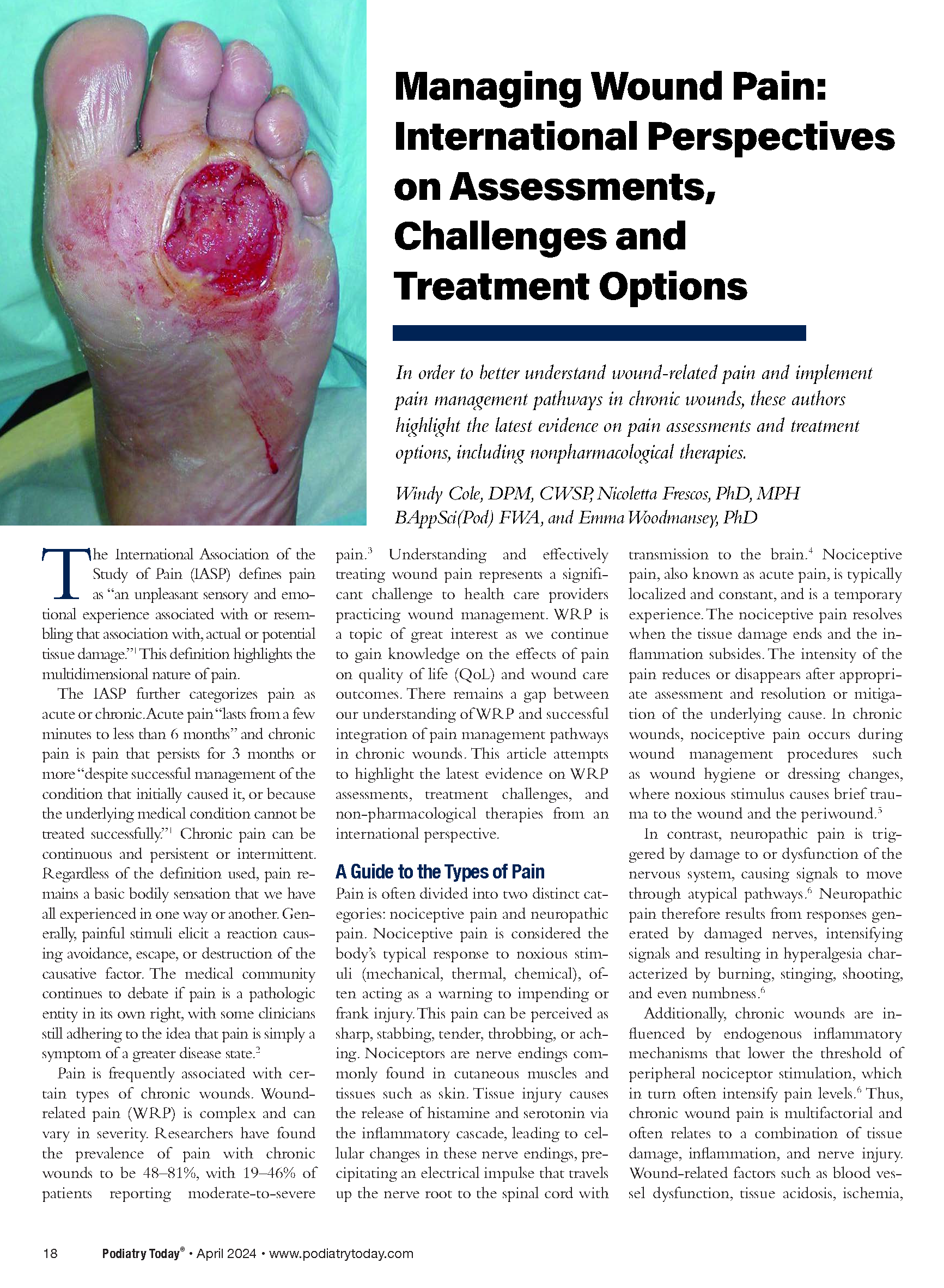Managing Wound Pain: International Perspectives on Assessments, Challenges and Treatment Options
Introduction:
Wound pain, a complex amalgamation of sensory and emotional experiences, presents a significant challenge in healthcare. Defined by the International Association for the Study of Pain, it encompasses a spectrum ranging from acute to chronic, affecting millions worldwide. Understanding its nuances is pivotal in devising effective management strategies. This article delves into international perspectives, assessments, and treatment modalities, shedding light on the multidimensional nature of wound pain.
“Researchers have found the prevalence of pain with chronic wounds to be 48–81%, with up to almost half of patients reporting moderate-to-severe pain.”
Key Topics:
- Types of Pain: Nociceptive vs. neuropathic pain in chronic wounds.
- Impact of Pain: How wound-related pain affects patients’ quality of life.
- Assessing Pain: Tools and methods for evaluating wound pain.
- Managing Pain: Pharmacological and non-pharmacological approaches.
Conclusion:
In the journey toward effective wound management, addressing pain emerges as a critical milestone. By acknowledging and understanding the diverse manifestations of wound-related pain, healthcare providers can pave the way for enhanced patient outcomes and improved quality of life. As research continues to unveil new insights and treatment avenues, a holistic approach to pain management remains paramount, ensuring that each patient receives the tailored care they deserve.
Authors:
- Windy Cole, DPM, CWSP, is the Director of Wound Care Research at Kent State University College of Podiatric Medicine.
- Nicoletta Frescos, PhD, MPH BAppSci(Pod) FWA, is Research Development Lead in Faculty of Pain Medicine at Australian and New Zealand College of Anesthetists (ANZCA).
- Emma Woodmansey, PhD, is the Global Clinical Director of NATROX Wound Care in Cambridge, UK.
